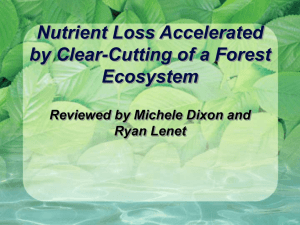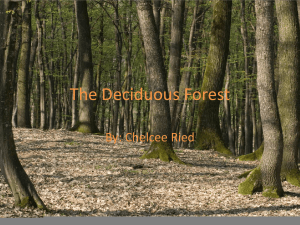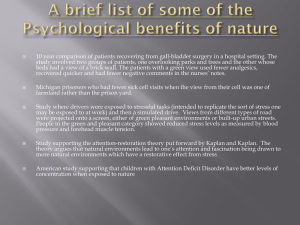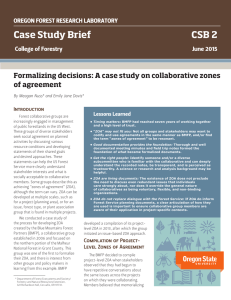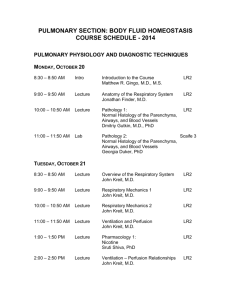Lodgepole Pine Zone of Agreement Working Group
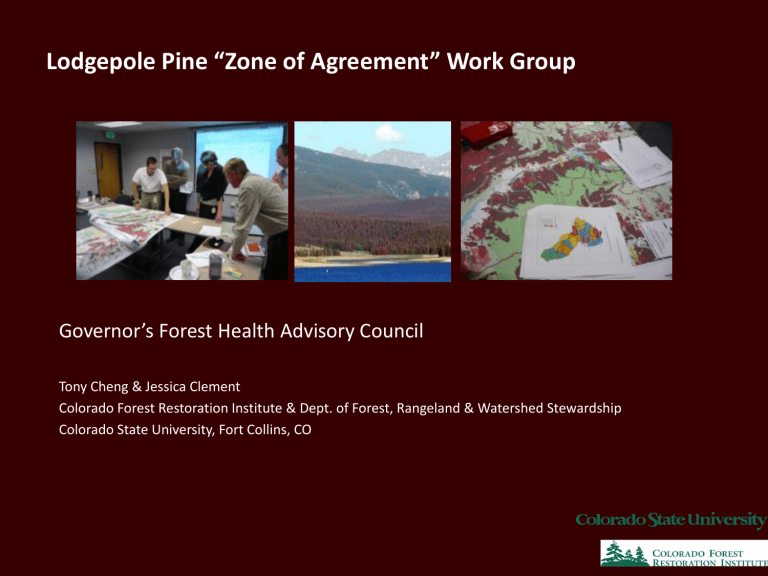
Lodgepole Pine “Zone of Agreement” Work Group
Governor’s Forest Health Advisory Council
Tony Cheng & Jessica Clement
Colorado Forest Restoration Institute & Dept. of Forest, Rangeland & Watershed Stewardship
Colorado State University, Fort Collins, CO
Background
The “LPP ZOA” work group was chartered by the Governor’s
Forest Health Advisory Council in September 2009 to:
• Identify the “zone of agreement” among diverse stakeholder for goals, objectives and treatment locations in lodgepole pine forests affected by the mountain pine beetle infestation
• Estimate the quantity and characteristics of wood from this ZOA
LPP ZOA Work Group Members
Rob Davis, Forest Energy
Joe Duda, Colorado State Forest Service
Don Kennedy, Denver Water
Brian Martin, Colorado Mountain Club (alternate for Shoemaker)
Brandon McGuire, Vail Resorts
Ken Neubecker, Colorado Trout Unlimited
Suzanne O’Neill, Colorado Wildlife Federation
Gary Severson, NW Colorado Council of Governments
Sloan Shoemaker, Wilderness Workshop
Barry Smith, Eagle County Emergency Management
Jim Thinnes, US Forest Service, Regional Office
Tom Troxel, Colorado Timber Industry Association
Ron Turley, Western Area Power Administration
John Twitchell, Colorado State Forest Service
Jeff Witcosky, US Forest Service, Regional Office (alternate for Thinnes)
CFRI: Jessica Clement, Tony Cheng, Mica Keralis (GIS) and Amanda Bucknam (notes)
Starting Points
Many goals and priorities for forest treatments already exist:
• National forest plans
• Bark Beetle Incident Management Team
• BLM area management plans
• County and community wildfire protection plans
• Private landowner management plans
• CWPP 2 – Critical Community Watershed Wildfire Protection
Planning, led by water providers, USFS, and CSFS
• Colorado Bark Beetle Cooperative 2007 mapping
Use Summit County as a case study
LPP ZOA Deliverables: Philosophical ZOA
1) A process framework that can be replicated in place-based collaborative efforts
• Start with values and interests
• Assess how these values/interests would fare across three general management options: no action, mechanical treatments, prescribed fire/resource benefit fires
• Framework allows for exploring trade-offs and overlaps
• Mapping values on the landscape
Work group found the framework useful for articulating diverse values & interests, and assessing impacts of alternative treatments within a collaborative, place-based process
LPP ZOA Deliverables: Philosophical ZOA
2) Zone of Agreement Statements
• For purpose of communicating to policy-makers
• Group strived for consensus…but still needs work
• Group desires to continue to hammer these out
LPP ZOA Deliverables: Operational ZOA
The LPP-ZOA work group articulated two parallel processes for operationalizing zones of agreement on the landscape
• Process of exclusion: Wilderness, roadless areas, steep slopes, soils
• Process of inclusion: identify priority areas thru a placebased examination of values, interests and goals (inclusive of all land classifications, including Wilderness, roadless, steep slopes)
Process of exclusion map for Summit Co.
Process of exclusion + select Work Group values
Next Steps
• CFRI’s “Future Range of Variability” conference , April 20-21 in Steamboat Springs
• Work group is willing to continue, with CFRI facilitation, to work on LPP ZOA, modeled after Montana Forest Restoration
Committee and individual National Forest-based committees
• Ongoing conduct, translation and transfer of current research to managers, stakeholders and policy-makers about post-MPB forest conditions and risk factors i.e., post-MPB forest growth (RMRS, CSU); examining past infestations and current fuel models (CSU)
THANK YOU!
Tony Cheng & Jessica Clement
Colorado Forest Restoration Institute & Dept. of Forest, Rangeland & Watershed Stewardship
Colorado State University, Fort Collins, CO






